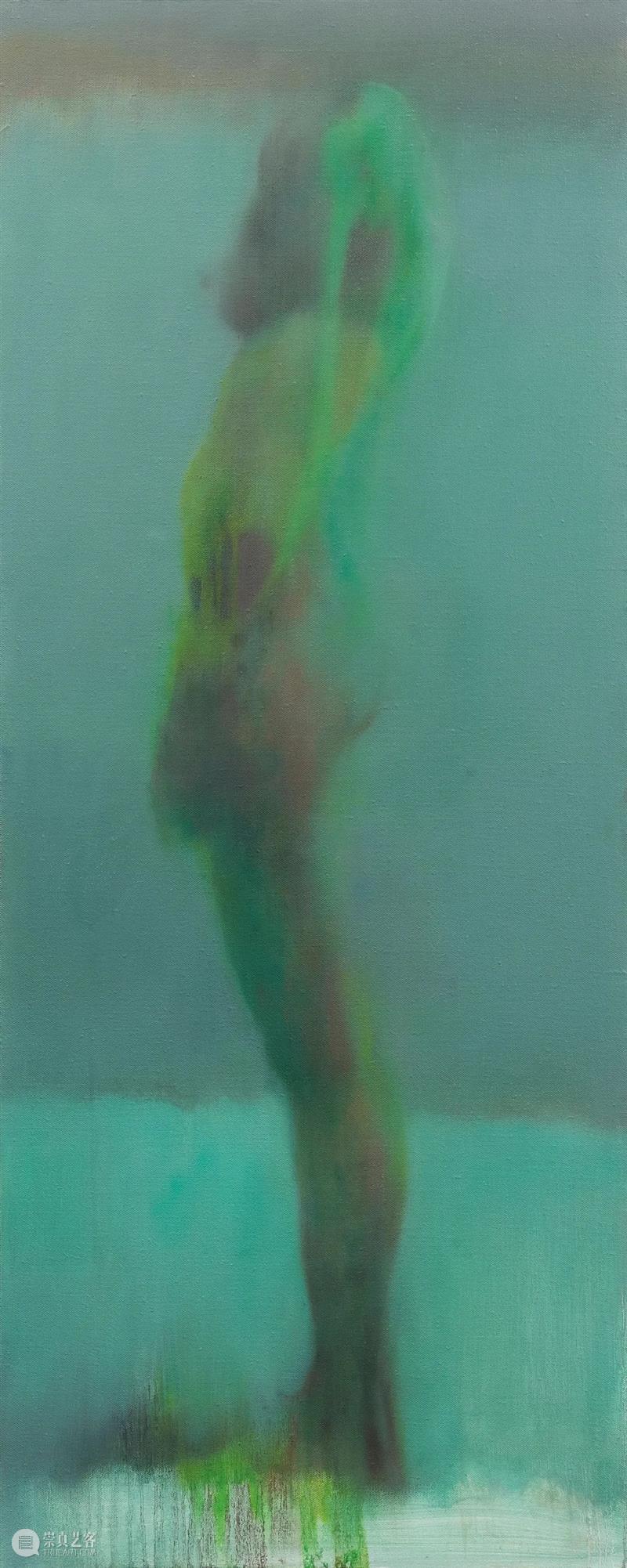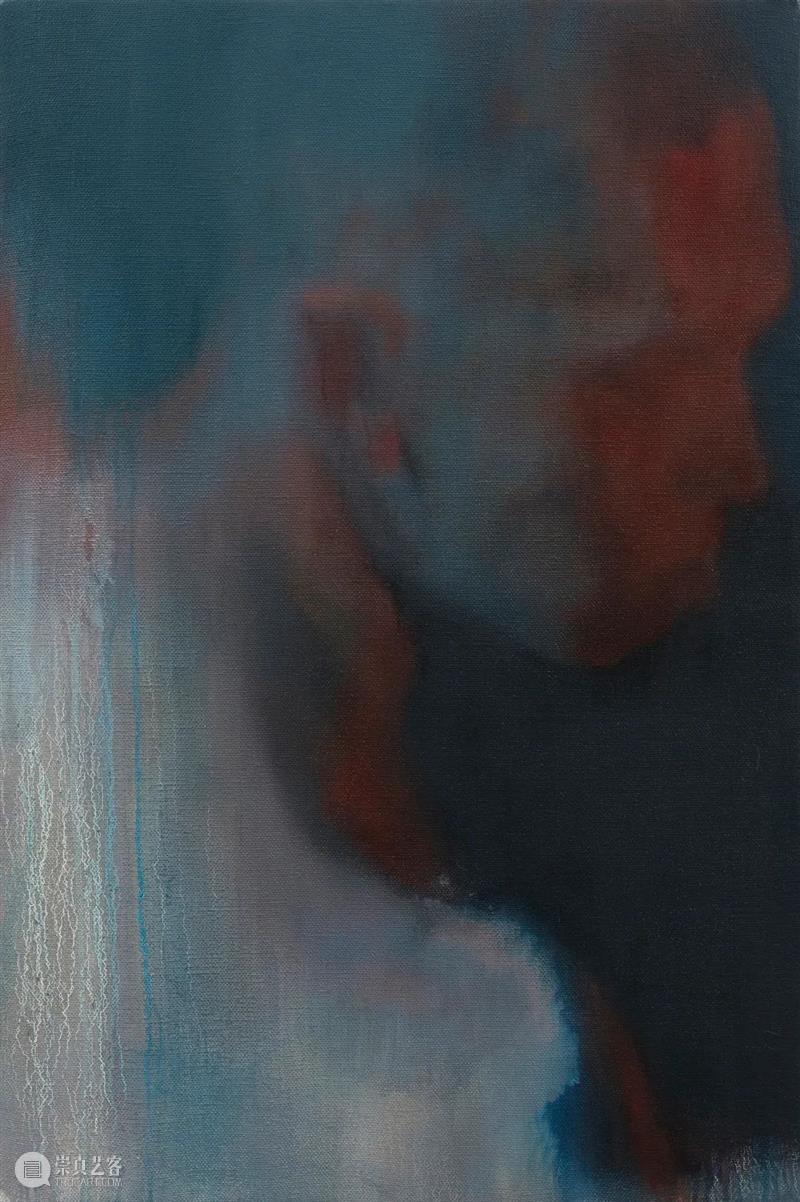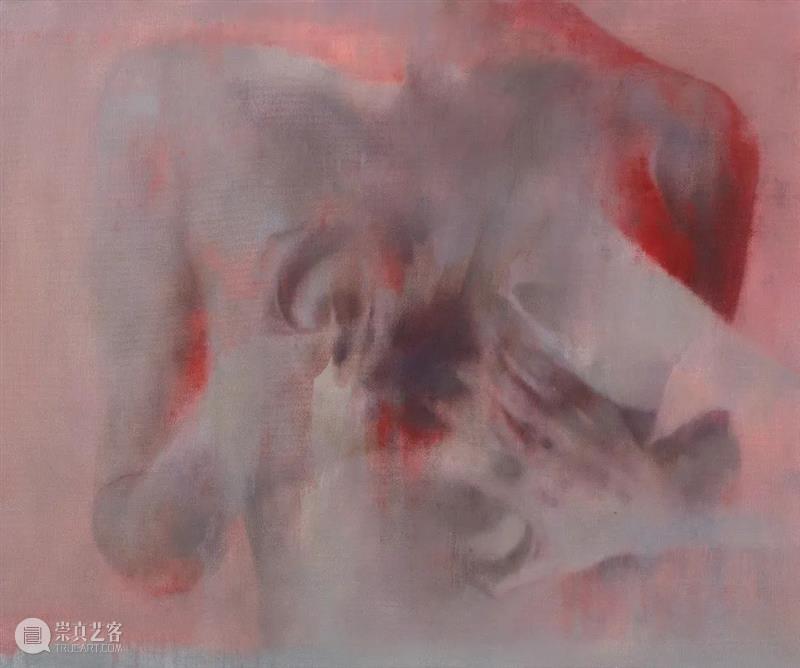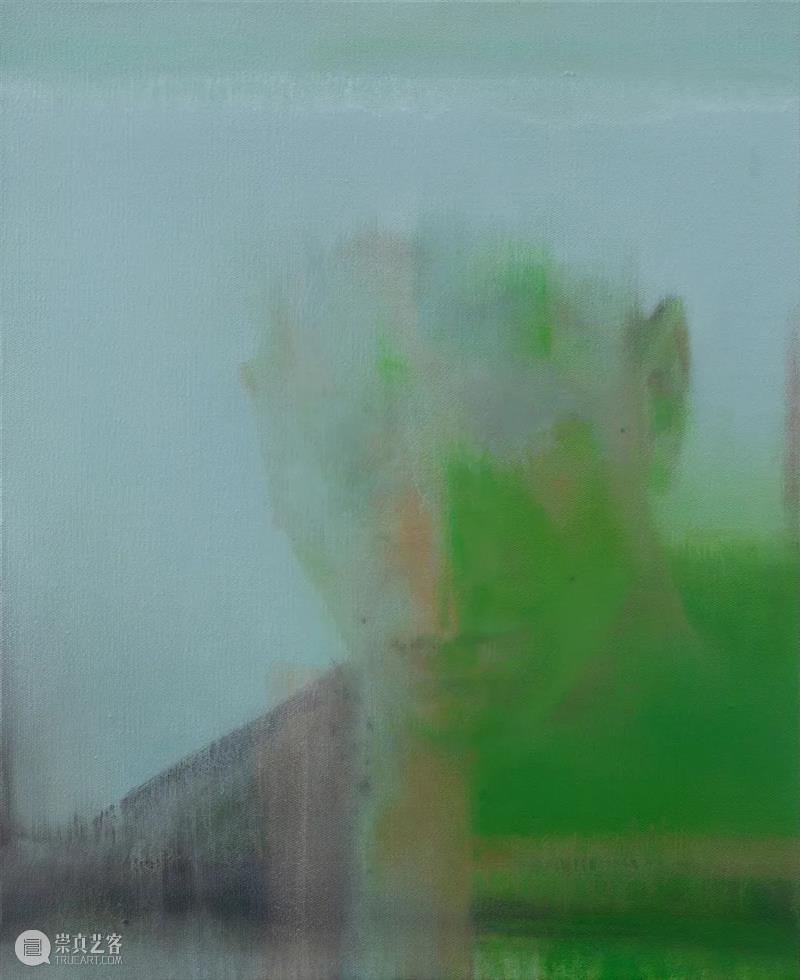【展评】杨紫 | 谢其:夏天过去了好几年
![]() {{newsData.publisher_name}}
{{newsData.update_time}}
浏览:{{newsData.view_count}}
{{newsData.publisher_name}}
{{newsData.update_time}}
浏览:{{newsData.view_count}}
来源 | {{newsData.source}} 作者 | {{newsData.author}}
谢其近来创作的油画以人体为描摹对象。画中的素描——在这里,“素描”指代反映空间造型的那部分工作——是写实的人体,多是静穆的,色彩却展现出动态的翻腾。2019年的《绿》中描绘的站立女性侧身,腹部的黄,背部的绿,与背景的蓝绿色相不同,明度相似。所以,身体与背景没有分离出跳脱的界限,画中人似乎微微颤动起来。
Xie Qi’s recent oil paintings depict the human form. The drawing part of these works—which refers in this case to the work of shaping the space—consists of realistic figures, generally tranquil, while the colors convey dynamic turmoil. The 2019 work Green depicts a standing woman from the side. The yellow of her torso and the green of her back have a different hue from the green of the background, though the brightness is similar. For this reason, there is no clear delineation between the body and the background. The person in the painting appears to quiver slightly.

谢其,《绿》,2019,布面油画,200 × 80 cm
Xie Qi, Green, 2019, oil on canvas, 200 × 80 cm
如果说,写实绘画中,色彩要依顺素描逻辑自我展现,那么,色彩的“冷暖”需要指明透视中的前后位置,才能共建一幅协调的绘画。然而,在谢其近作中,色彩构造的空间感被刻意搅乱,加上她喜爱截取身体的片段入画,人们经常无法完整地辨认出眼前流动的景象是什么。《红色的阴影》(2019)中,边缘模糊的耳朵和扭转的后颈置于画面中央。耳朵遁入灰色的前颈皮肤,耳廓软骨支撑出的复杂结构被一笔带过。光穿透了耳,没留下什么影子。下颌的阴影被着重描画,映出凌厉、复杂的暗色。耳垂、脖颈和肩膀的深影趋向同一方向,颜色的深浅起伏引动戏剧性,以至于观众观看绘画时,无法第一时间聚焦画面右侧边缘的脸孔。这与我们日常与他人打交道时分配注意力的流程相反。我们察言观色,辨认他们的眉眼和表情,然后决定以何种方式发起互动。只有表达冷漠或者害羞的时候,我们才会选择回避与别人的目光接触。眼睛是我们辨认他人心情的重要窗口。谢其画画,总爱略去眼睛。《绿色的密度》(2021)中,模特的眼被抹掉,身影像一座萦绕着雾气的山峰。
If we accept that in realist painting, colors must present themselves according to the logic of drawing, then color temperature must delineate front and rear in perspective in order to create a harmonious painting. In Xie Qi's recent works, however, the sense of space formed by color has been intentionally scrambled. When paired with her predilection for depicting partial views of the figure, people are often unable to fully recognize the fluid image in front of them. In Shades of Red (2019), an ear with a blurred outline and a turned neck are placed at the center of the painting. The ear retreats into the gray skin of the neck, with the complex structure of the cartilage evoked by a single stroke of the brush. The light passes through theear without leaving a shadow. The shadow of the lower jaw is emphasized to highlight a stark, complex dark tone. The dark shadows of the earlobe, nape, and shoulder all lean toward a single direction, while fluctuations in the depth of the color touch off a sense of drama that temporarily blocks the viewer from focusing on the face at the right edge of the picture. This is contrary to our usual allocation of attention when interacting with others. We observe people’s faces and expressions to decide how to interact with them. It is only when we detect coldness and shyness that we choose to avoid eyecontact. The eyes are an important window into the emotional states of others. Xie Qi tends to omit the eyes in her painting. In Density of Green (2021), the model's eyes have been erased, and the profile resembles a mountain peak wrapped in clouds and fog.
谢其,《红色的阴影》,2019,布面油画,90 × 60 cm
Xie Qi, Shades of Red, 2019, oil on canvas, 90 × 60 cm
谢其,《绿色的密度》,2021,布面油画,80 × 65 cm
Xie Qi, Density of Green, 2021, oil on canvas, 80 × 65 cm
在谢其的绘画辞典中,“素描”和“色彩”被区分成两个不连贯的概念。人形是可辨认的具体形态,它在艺术历史和日常生活的海量视觉经验中被认知得如此熟悉,不可避免地具有定式。谢其没有肆意地更改这视觉的定式。按照她的话说,“变形人体是‘残酷’的”。这句话或许可以理解为:身体的形象带有意识形态味道,人文主义的,消费主义的,不一而足;如果将其变形,需要创立一种意识形态滤镜消解之前的意识形态。与其循环反复地给这一老命题贴上赋予意义的新标签,不如老实地、干涩地、赤裸地再现它。与此相对,在使用颜色的时候,谢其试图将绘画对象阐释为魅惑的存在,陌生的感召。这些颜色和颜色的肌理脱离了素描,依然画的是人——具体来说,是人那些不可控的、迷醉的、肆意的部分。这一部分似乎呈现的是附着于人表面的外在想象。这些想象顺着观众的目光,从画面之外投射到人形上,改变了人形本来的样貌。《酵母之乱》里,一副躯干被处理成莫名的花朵,花蕊是点在胸口的阴影,两只手向画面外伸出,是花瓣的纹路。这朵“恶之花”的画面呈放射性构图,画面左右两侧线条流畅的臂膀环抱住散射的线条,是花朵柔和的边沿。画面因而铸成平衡的效果。画家对人体形式的选择制止了色彩的失控,但这一绘画结构上的功能并不能让观众眼中的抽象花朵立刻还原为实象的身体。篡改图像的色彩,是开放的,却揭示了某种根深蒂固的误读机制——在视觉中,共同认知或者集体幻想从未离场过,即便如身体这般最常见的题材的清晰轮廓就在眼前,它也会被折射成为另外一套话术。谢其的肖像画因而获得了政治性的隐喻——再自然、直白、不经修饰的现象,亦难逃被广袤秩序分配位置的命运。In Xie Qi’s painting lexicon, “drawing” and “color” have been split into two unconnected concepts. The human form is the specific morphology that can be recognized. In the mass accumulation of visual experience from art history and everyday life, it has become so utterly familiar, and has unavoidably taken on certain set patterns. Xie Qi has no tradically altered these visual patterns. In her words, “distorted figures are ‘brutal.’ ” This statement could perhaps be understood as: the form of the body has ideological implications, various humanist, consumerist and other connotations, and if we are to distort it, we must establish an ideological filter to dispel the previous ideology. There's no point in repeatedly attaching new markers of meaning to this old topic when one can sincerely, doggedly, and nakedly re-create it. In the use of color, on the other hand, Xie Qi attempts to turn the object of painting into a seductive presence, an unfamiliar impulse. These colors and color textures are decoupled from the drawing, but they still depict people—specifically their uncontrollable, engrossing, reckless side. This part seems to be presenting external imaginings of people attached to their surfaces. These imaginings follow the viewer's gaze, projected from beyond the picture onto the human form, changing its original appearance. In Disorder of Yeast, a body has been rendered as an indescribable flower, the stamens being the shadows on the chest, the two hands extending out of the picture with the texture of petals. This “fluer du mal” picture has a radial composition, with the fluid lines of the two arms at the sides wrapping around radiating lines, the soft edges of the flower. This molds the picture into a balanced effect. The artist’s choice of the human form keeps the color from spiraling out of control, but this structural function of the painting does not immediately turn the abstract flowers back into an actual body in the viewer’s eyes. The image-altering colors are open-ended, yet they reveal a deeply rooted mechanism of misreading—shared recognition or collective illusion has always been a part of the vision. Even such a common place and clearly outlined topic as the body gets refracted into another set of rhetorical devices. Thus, Xie Qi's portraits take on political metaphor—re-natured, direct, and unadorned phenomena that cannot escape the fate of allocation within the vast system. 谢其,《酵母之乱》,2019,布面油画,90 × 60 cm
谢其,《酵母之乱》,2019,布面油画,90 × 60 cm
Xie Qi, Disorder of Yeast, 2019, oil on canvas, 90 × 60 cm
文:杨紫
译:谢飞(Jeff Crosby)
【瑞士展讯】谢其个展:“酵母之乱”|12月1日麦勒画廊卢森开幕

{{flexible[0].text}}

 {{newsData.good_count}}
{{newsData.good_count}}

 {{newsData.transfer_count}}
{{newsData.transfer_count}}













 分享
分享